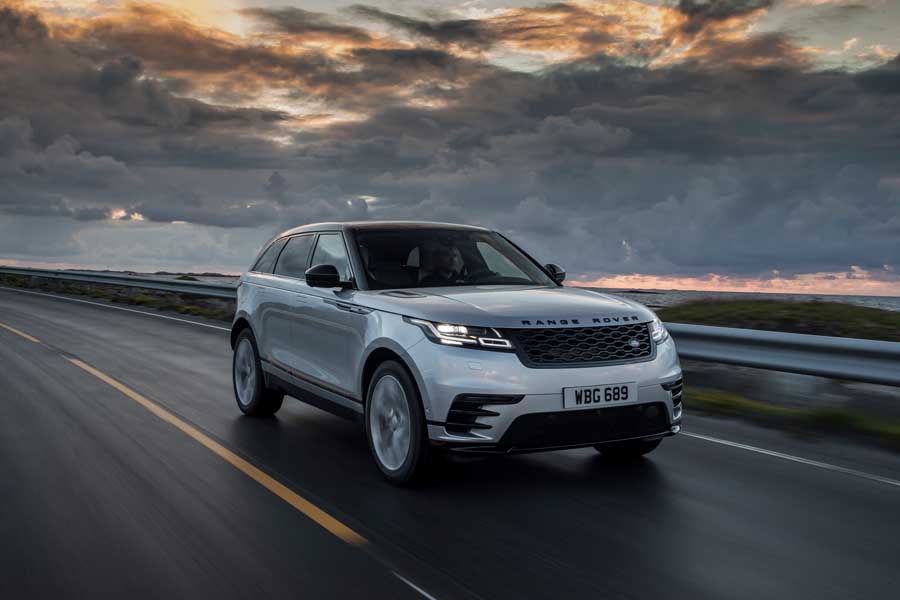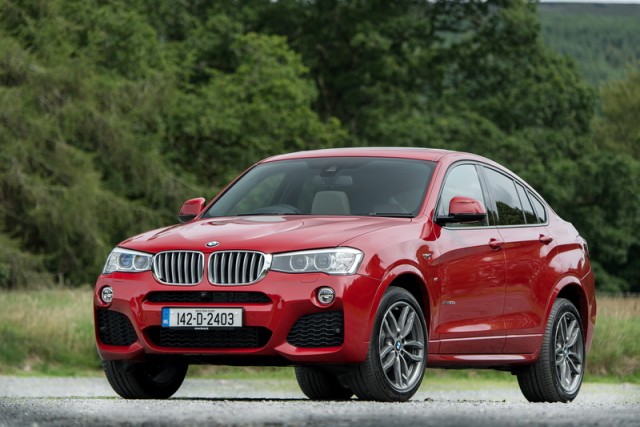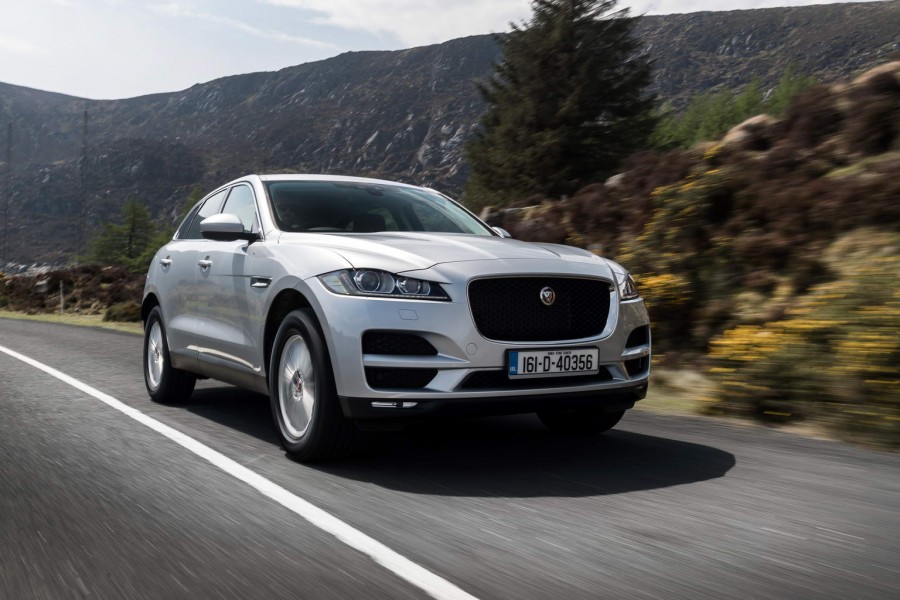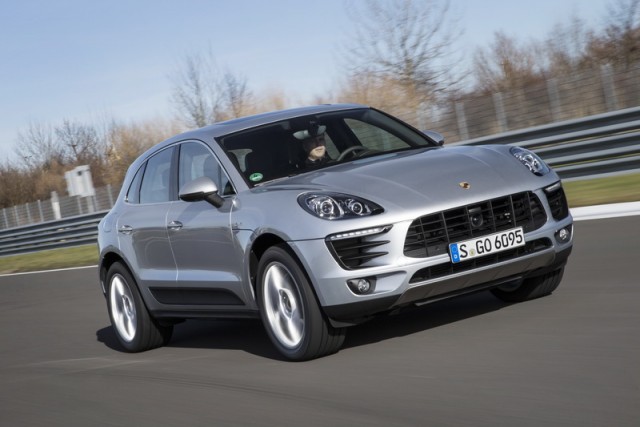The brand new Range Rover Velar fills the gap between the Evoque and the Range Rover Sport - and potentially overshadows them both. Here we test drive the 3.0-litre V6 diesel version.
In the metal
The Velar is a truly striking car at which to look. Chief designer Gerry McGovern has been guilty in the past of slapping gold onto lilies that needed no gilding, but here he has pulled back, simplified the Velar's lines and made it look far cleaner than the occasionally fussy Evoque or Range Rover Sport. Size-wise, it slots between those two cars, filling the gap between their upper and lower prices, but actually it's far closer to the Sport in size than the Evoque. It's a really chunky machine, albeit one with low-slung styling, the rear end seeming to sweep back like some expensive powerboat.
Inside, the cabin is dominated by the new Touch Pro Duo infotainment system, which uses double-decker ten-inch HD touchscreens to dismiss most of the physical buttons. The top screen is the familiar one from the Discovery, but the lower one is all new, with two physical rotary controllers seeming to float on its surface. Net of concerns about Land Rover's reputation when it comes to electronic reliability, it's an impressive system - slick and fast and easy to get your head around, with the lovely tactile additions of the rotary controllers and the ability to swipe some of the functions from one screen to the other. With it, you control the infotainment (still devoid of Apple CarPlay or Android Auto for another year yet, it's worth noting), the off-road Terrain Response, the Dynamic settings for on-road driving, the satnav, the heating and air conditioning and more. It's all very clever and looks exceptionally cool.
Up above, there's an optional new 12.3-inch TFT instrument screen, in lieu of standard analogue dials, which can do the whole Audi-style big map view amongst other things. There's a new head-up display too, which can show steering angle and more when off-roading.
The rest of the cabin looks good and feels well made, but it's not hugely roomy. Legroom in the back is only OK and the 634-litre boot, although impressive, is perhaps not quite as big as you'd like it to be.
Driving it
This assessment comes with the caveat that we've not yet driven the core 180hp and 240hp 2.0-litre diesel engines, only the range-topping V6 diesel and supercharged 380hp V6 petrol. The petrol engine is impressive in both its acceleration and its refinement, but it's the diesel that's the star here thanks to oodles of low-down torque - 700Nm of the stuff - which mean you fly off the line even quicker than in the petrol model, while its languid nature and good refinement really suit the character of the Velar. Figures of 44mpg and €570 a year to tax it don't seem like too much of a stretch, do they?
Even more impressive is the Velar's dynamic repertoire. Being based on the same basic set of components as the Jaguar F-Pace gets it off to a good start, but the first thing you'll notice is that it rides much better than the Jag. That's mostly down to the optional air suspension (standard on V6 models) that delivers a truly cosseting ride, only interrupted by an occasional thump from the massive, optional, 22-inch wheels hitting some poor surface. Stick with the smaller rims, methinks.
The Velar is also possibly the best-handling Land Rover product ever. Slick, Jaguar-like steering helps, and in Dynamic mode there's great weighting and feel to the helm. The air suspension also deftly juggles comfort and cornering control and, allowing for a touch of roll, it's possible to really thread together an entertaining series of corners. Taken for a brisk run on a section of gravel road, the Velar felt almost like a very expensive rally car.
It's very sure footed too, thanks to a four-wheel-drive system that is predominantly rear-biased, but which can send as much as 100 per cent of the engine's torque forwards at 200 milliseconds' notice. That's backed up by torque vectoring (by brakes on lower models, by an active electronic differential on V6s) that ensures power gets to the wheels that can best use it, and which helps to hold the Velar on a very tidy, consistent cornering line. It's not entirely unlike an overgrown hot hatch, but with similar levels of refinement to the bigger Range Rovers.
Off road, it's simply amazing. You just should not be able to scramble up a one-in-five hill covered in slippery, wet shale and rocks in a leather-lined €100k luxury car, but the Velar leaps to the opportunity like a 20-year-old Defender. Albeit without the earache and backache that comes with a Defender. Land Rover brought us to the rugged (and insanely gorgeous) west coast of Norway to test the Velar and in spite of the rocks, the rivers, the grass, the mud, the rain, and even the odd patch of snow, there was simply nowhere that was off-limits to us. OK, so Land Rover doubtless carefully picked the tracks for us to use, but I seriously doubt many rival products would have managed quite so well.
What you get for your money
There's no getting away from the fact that the Velar is expensive. It's more expensive even than the Jaguar F-Pace with which it shares so much at the basic end, although Land Rover counters that the Velar is more luxurious and better equipped. You do get the Touch Pro Duo as standard, as well as an automatic gearbox, cruise control, heated seats, cool door handles that pop out from flush when you thumb the key, LED headlights and 18-inch alloys.
Adding on engine power or equipment sends the price spiralling though, and it's not long before you're getting close to full-size Range Rover territory. Worth mentioning though that you can have so-called 'vegan seats' as an option - they use, in place of leather, high-quality tweed and soft cloth, along with Alcantara fake suede. Few will take up the option, perhaps, but it's nice to know it's there.
Summary
The appeal of the new Range Rover Velar is a particularly broad-band one. You can just as easily imagine one pulling up in front of The Shelbourne, disgorging a cargo of tuxedoed and be-gowned occupants, or hauling across a muddy field in search of some missing sheep - assuming that the shepherd is particularly well-heeled. It can do either task, and many in between, and look fantastic doing them all. Admittedly, it's not cheap, and we're keeping our fingers crossed that Land Rover can back up its quality claims, but this is a truly excellent car. It's deeply impressive to drive, exceptional off-road and moves Land Rover's exterior and interior styling on a significant notch.


























